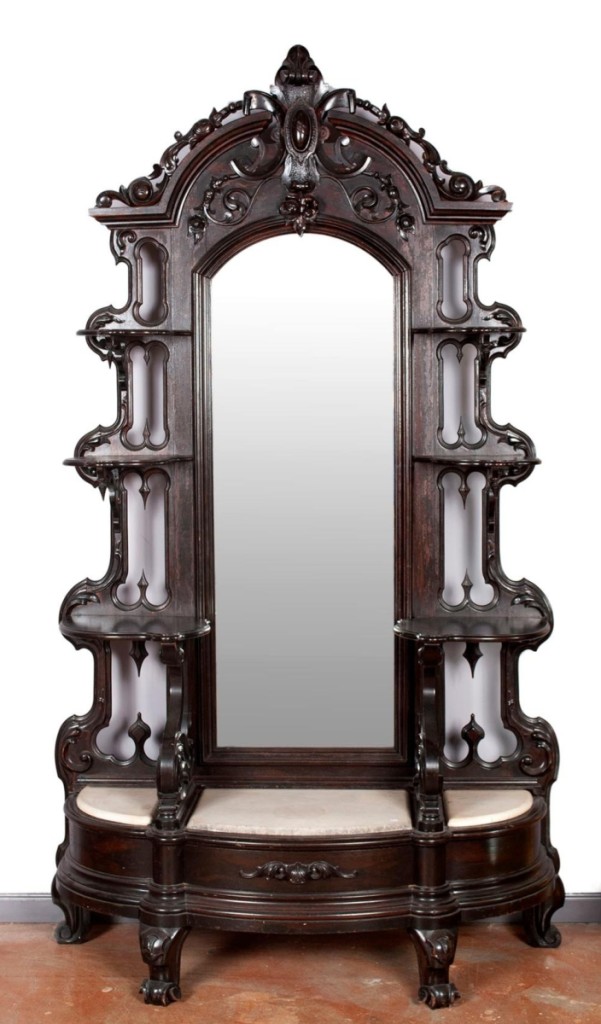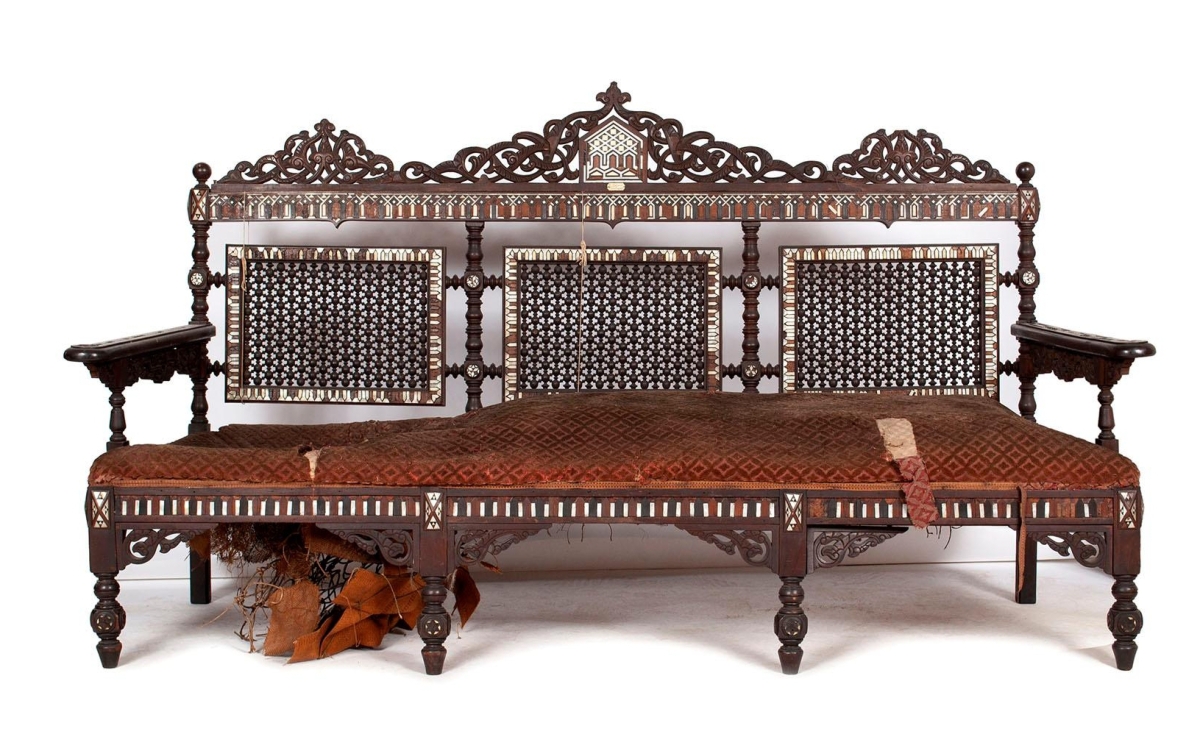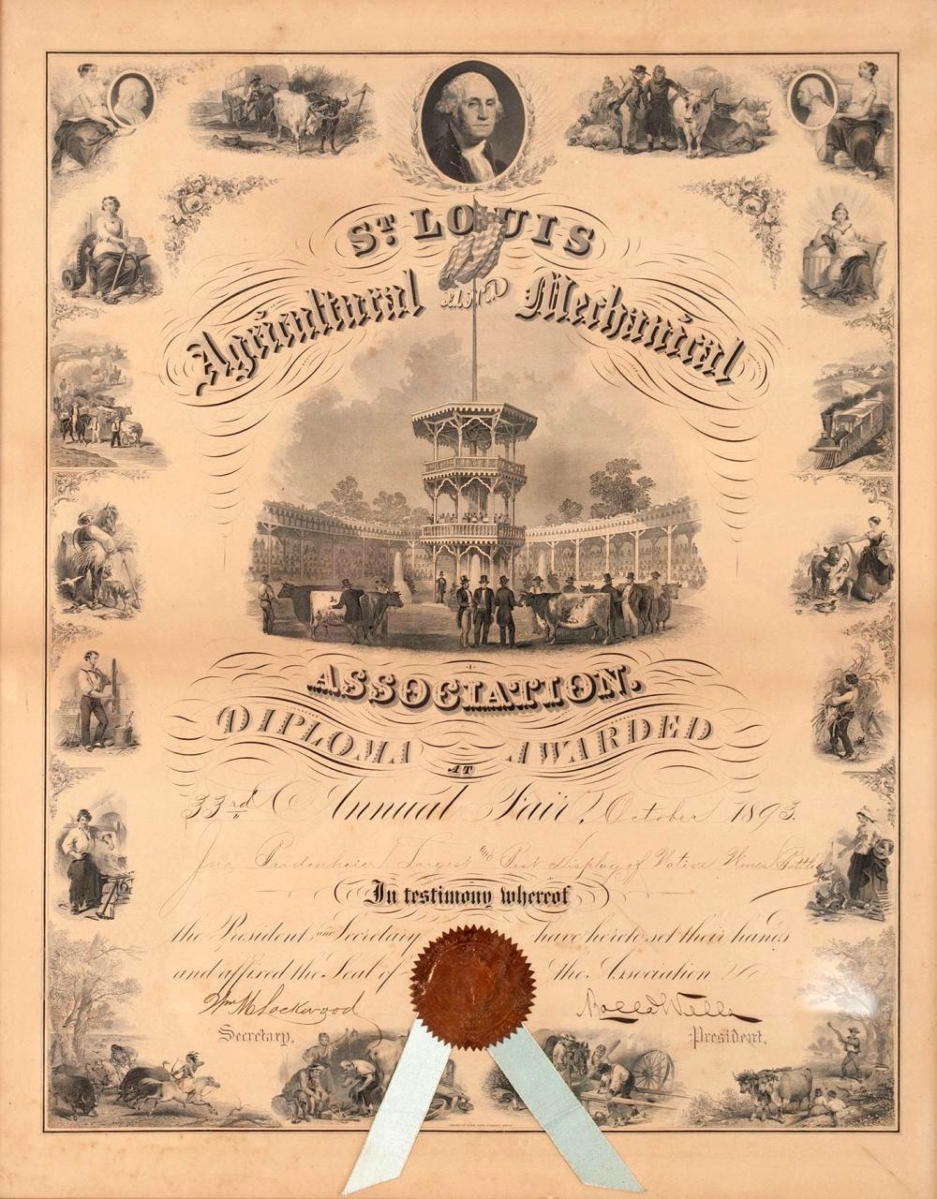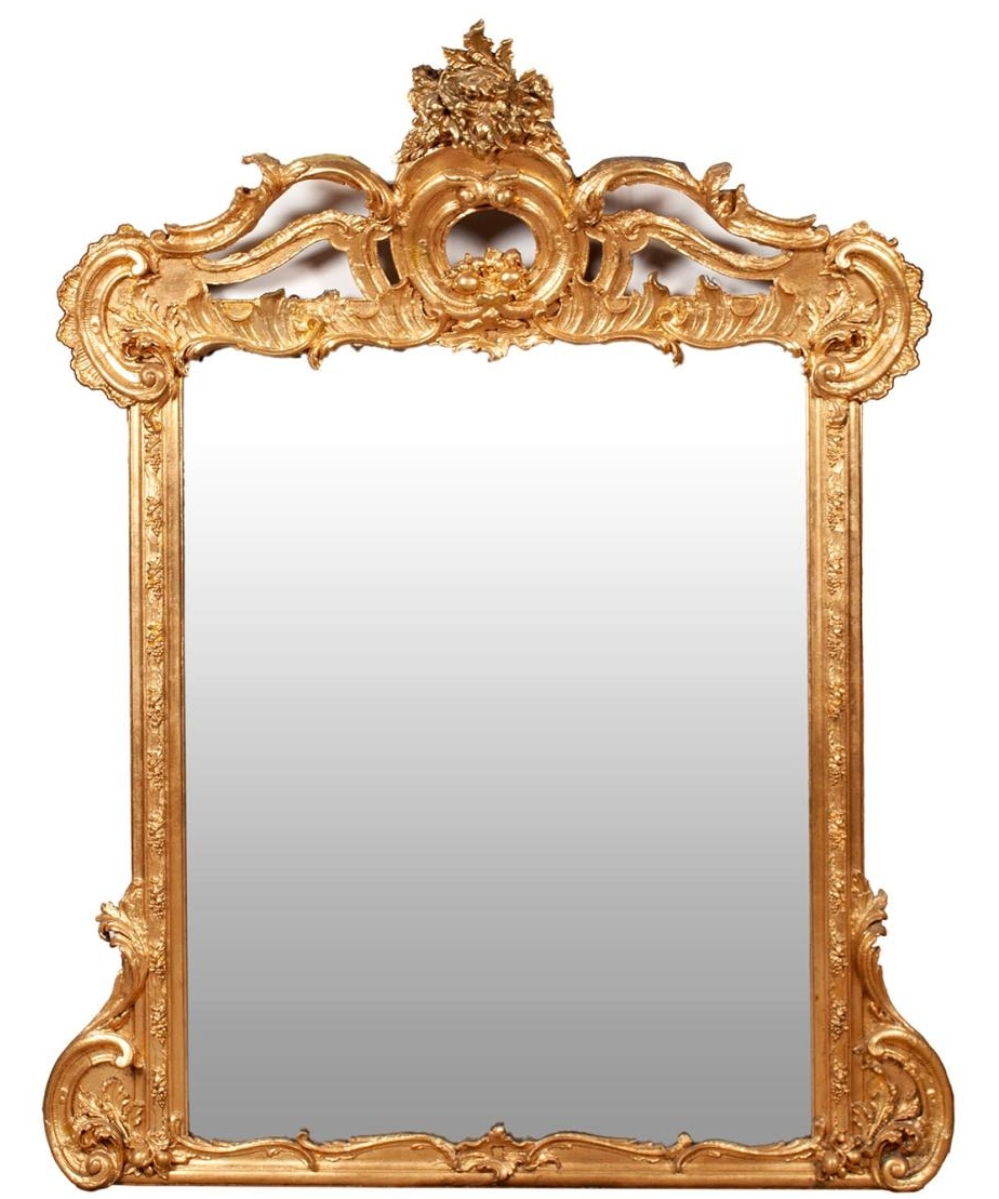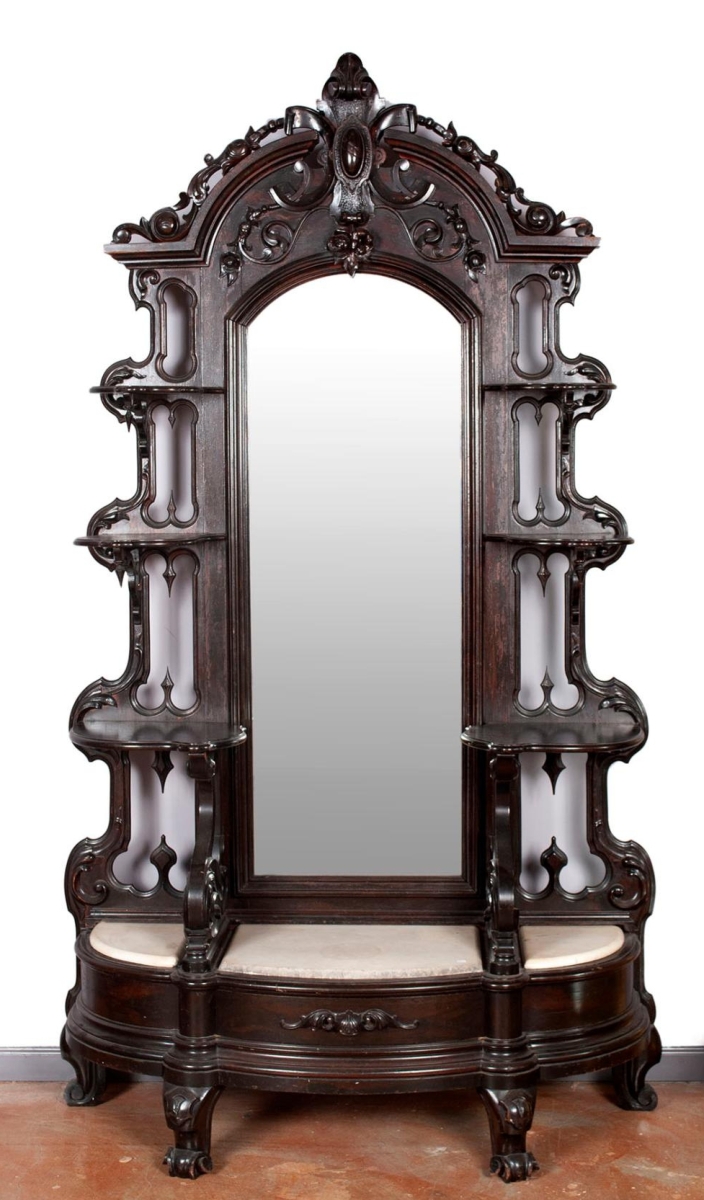
The top lot of the sale was found in this bronze sculpture titled “The Captain’s Return” by contemporary American artist Harry Weber. The work, which features Lewis, Clark and their dog, Seaman, is editioned 1 of 25, though only 15 are thought to have been made. The sculpture brought $12,000. The full-size bronze edition, weighing in at 9,000 pounds, is installed on the riverfront grounds of the St Louis Gateway Arch. The monument was originally situated near water level, and even though the image features the explorers in a small rowboat, it was regularly flooded over by the Mississippi River. The city reinstalled it on the grounds, but in a higher position, in 2016.
Review by Greg Smith, Photos Courtesy Selkirk Auctioneers & Appraisers
ST LOUIS, MO. – Missouri pride was served hot in the heartland when Selkirk Auctioneers & Appraisers sold off the collections of Patricia Sue Villmer and the contents of a historic Clarksville, Mo., Mississippi River home on December 14. The sale featured 459 lots, with only seven lots passing throughout the day.
“We felt pretty positive about the sale,” Selkirk curator Brian Laughlin told us following the auction, “We hit the mark on nearly all of the lots.” The sale boasted a 97 percent sell through rate. “There were not a lot of surprises, which makes me feel good about the valuations with our team. The pieces we highlighted to attain high dollar were the ones that did it. It was a good model for what an auction should be when you know the material.”
Patricia Sue Villmer oriented her collection around St Louis history, collecting artifacts of the city’s past with significant attention to the 1904 St Louis World’s Fair, known as the Louisiana Purchase Exposition. Villmer was a founding member of both the 1904 St Louis World’s Fair Society and Gateway Postcard Club. “There’s a very impressive ephemera collection that’s quite extensive,” said Laughlin, before the sale got underway. “There are several rare relics and souvenirs from the World’s Fair. You can tell the collection was put together very thoughtfully; it’s not just some random pieces.”
Villmer was obviously born after the Exposition, but she no doubt relived it and educated herself on the particulars to a scholarly degree. Not only were there plenty of World’s Fair souvenirs in her collection, but also appearing were some rare pieces that told distinct stories from specific perspectives.
One example was found in the Jefferson Guard short sword and scabbard, produced by the Ames Sword Co and etched with the words “Jefferson Guard” to one side and “Louisiana Purchase Exposition” to the other. “They were essentially a hired police department brought to the fair to provide security,” Laughlin said. The blade sold for $1,080. Also from the Jefferson Guard were two bronze belt buckles that took $238.

“The City of St Louis,” a hand-colored lithograph published by Currier and Ives in 1874, sold as the second highest lot in the sale at $5,938. The image, a birds-eye view of the city as it rapidly expands, its borders visually limitless, was evidently prepared to show the city’s promise at the United States Centennial celebration of 1876.
The top of the sale was governed by a bronze sculpture titled “The Captains Return” by American artist Harry Weber. The bronze was numbered the first edition of 25, although only 15 are thought to have been made. It is the maquette of the famed 9,000-pound monument on the riverfront grounds of the St Louis Gateway Arch. The sculpture depicts Lewis, Clark and their faithful dog, Seaman. It sold for $12,000.
Settling in at $1,200 was a lot of 14 1904 World’s Fair silk postcards depicting the historic buildings and halls of the fair. The postcards came with their original purchase invoice. The Louisiana Purchase Exposition issued $6 million in capital stock, and a $10 share certificate issued to “T.M. Hostetter” would sell for $960. A silver medal in bronze together with its certificate, awarded to Andrew T Kaletta for “Statues – Altars – Pedestals and Crosses,” would sell for $500. A gold medal, also in bronze, without certificate or any identifying text as to what it was awarded for, sold for $688. Two large lots of ephemera, including stamps, lithographs, advertising, envelopes, invitations, note cards, photos and more, would bring $469 and $420.
World’s Fair souvenirs were plentiful. A 10-inch-diameter commemorative porcelain plate by Knowles with a pink border would sell for $660, while a similar plate by the same maker, with a green border, brought $510. A set of seven World’s Fair jasperware souvenirs, including plaques, took $450. A set of three Japanese porcelain pieces from the fair, including a basket, vase and pen tray, went out at $420. A World’s Fair two-sided purse in the form of an owl went out at $420.
From another St Louis consignor came four lots of Mamluk Revival furniture, all purportedly in the Exposition, and all would sell well. They bore a plaque of Elias Hatoun, who was a Cairo-based antiquities dealer mentioned in Ann Gunter’s 2002 book A Collector’s Journey: Charles Lang Freer and Egypt. That account puts Hatoun operating in Cairo’s Muski Street bazaar along with several other dealers. A three-seat settee featured exotic wood with ebony, ivory and abalone inlay, and it sold for $1,920. A two-seat bench brought $540, while a pair of armchairs took $480 and a pair of side chairs brought $510. The three-seat settee came with a booklet and hand-written note signed by A.H. Abaza, the Egyptian delegate to the Louisiana Purchase Exposition.
Two Currier and Ives works were found desirable. “The City of St Louis,” an aerial view of the city in a hand colored lithograph, dated 1874, went out at $5,938. “Midnight Race On The Mississippi,” an image showing the Nineteenth Century race between the Natchez and the Eclipse steaming up the Mississippi, went out at $2,000. A similar steamboat race image between the Fulton and the Danna, published by Thomas Kelly, N.Y., went out at $469.
Perhaps one of the largest historic impacts in the foundation and build-up of St Louis is the Mississippi River, who supplied the great vain to transport resources and folk alike into the region. And along that river are some of the Midwest’s oldest homes. A historic riverfront home in Clarksville, Mo., – guess who that town is named after! – supplied the other half of the sale.
Laughlin noted that Selkirk produced this thematic sale first in December 2018, offering historic St Louis material. But the addition of the Mississippi River Valley to this sale’s headline is no accident. The auction is expanding. “We expanded it this year because in the future, we want to start working with the historic river homes. And expand down the river to New Orleans and Memphis.”
The home’s contents featured a late Nineteenth Century traditional style, spanning European marble sculptures, French gilt furniture, Renaissance revival pieces, Victorian taxidermy, Bohemian glass and more.
At the top here was a 67-inch-tall terracotta sculpture from Twentieth Century Italy. The piece sold for $3,438 on a $300 estimate. A 29-inch-tall marble sculpture of a female, cataloged as continental and from the Nineteenth or Twentieth Century, sold for $1,250.
Mirrors, both standalone and as part of furniture pieces, reflected bidder interest. An American Victorian mirrored back etagere in ebonized wood, late Nineteenth Century, enticed enough to sell at $1,320. Behind were two gilt pieces, a carved wood gilded age mantel mirror, late Nineteenth Century, American and 84 by 66 inches, $1,140; followed closely by a Rococo Revival pier mirror and stand, $1,080. A Renaissance Revival mirrored back sideboard in cherry and flamed mahogany took the same price at $1,080.
Victorian taxidermy examples were found throughout the sale, all under cloche glass domes, and were led by a $1,000 result for a tree branch twisting upwards with seven various taxidermy birds.
The firm looks forward to offering this auction again in December 2020. Selkirk’s next sale is on January 18.
For more information, 314-696-9041 or www.selkirkauctions.com.

